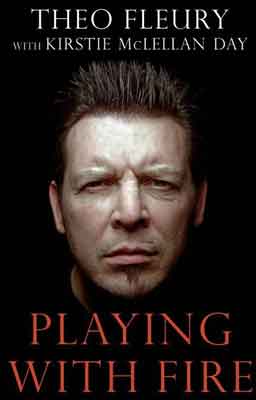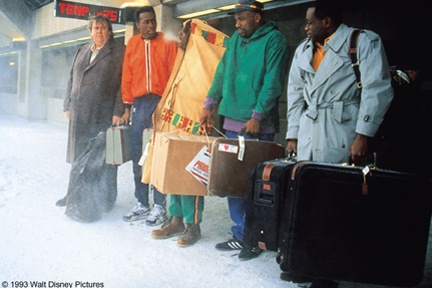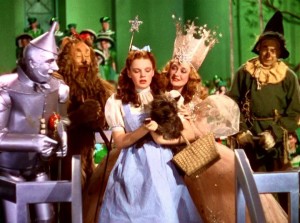As is the case throughout much of GGRW, my section (pages 270-286) explored a variety of different characters and story-lines, and in such, a variety of allusions are involved.
Religion/Christianity
The first allusion is religious in nature, and involves Thought Woman and her conversation with A.A. Gabriel. As Flick alludes to, this conversation refers to a section of the New Testament, involving Archangel (A.A.) Gabriel and the Virgin Mary (Thought Woman). The allusion begins with A.A. Gabriel, who refers to himself as ‘Heavenly Host’, and his renaming of Thought Woman as Mary. Flick suggests Gabriel’s ignorance of Thought Woman’s Indian name refers to the re-naming of First Nations people, and the extent to which Christianity was used to facilitate First Nations assimilation.
The religious metaphor continues with the singing of A.A. Gabriel’s card. When Coyote first hears the song (Hosanna da), he incorrectly identifies it as “Hosanna in the Highest”, a passage from the Bible (Mark 11:10). The narrator corrects Coyote, who reveals a play on words on the Canadian national anthem, referring to it “Hosanna da, our home on Natives Land (as opposed to ‘home and native land). This is an obvious allusion to the colonization of Canada by Europeans.
Reality vs. Imagination
The section then switches its focus to the four Old Indians, Coyote, and Lionel, intersecting them all. On the day of his fortieth birthday, Lionel had devised four manageable goals, in order to turn his life around, and it his here that the story presents and intersection in the text, one between imagination an reality. Lionel imagines all of his goals falling perfectly into place, and the conversations that will take place:
- His resignation from Bursum’s will be understood and encouraged by Bursum himself. “After he explained to Bill how he wanted to get on with his life, he was sure that Bill would understand… ‘Good for you, Lionel. Don’t forget us when you’re rich and famous.” (p.277)
- His return to university, the University of Toronto his destination of choice, will go smoothly with the assistance of Eli Stands Alone. Eli: “That’s a good career move, Lionel… I know the president. Would you like me to call him?… Will you need any scholarship money?” (p.278)
- Alberta will be willing to sacrifice her career for Lionel and have children. Alberta: “[My career] can wait. I can always pick it up later… Lionel, I’d love to have your children” (p.278)
In reality, these conversations would never go as planned. Lionel’s allegiance to Bursum was the reason he had never returned to school in the first place and Bursum will be reluctant to let him go. Meanwhile, Eli does not hold Lionel in high regard, and it would be unlikely he would be willing or capable of single handedly admitting Lionel to university. Lastly, as alluded to earlier in the novel, Alberta does not want to have kids with Lionel or Charlie. This section is an obvious intersection of Lionel’s imagination and the reality of the unlikelihood of his aspirations.
Outfits
The section concludes with Alberta revisiting the story of the detained outfits. The story itself alludes to the tumultuous relationship between First Nations people and white/European/colonized society, and does so on several occasions. The first of these allusions is tied to the government’s involvement in the return of the outfits, and the exposure of the story by both the media and the government. The allusion present is the government glorifying their rectification of an issue that should never have occurred in the first place, commending themselves for having fixed it as opposed to apologizing to First Nations people for its occurrence in the first place. The second allusion occurs when Alberta’s father brings home the confiscated outfits. “Two of the outfits were badly tattered, most of the feathers snapped off, the ends missing. Alberta’s mother said the others could be repaired. As she held each one up to the light, Alberta could see the pattern of dirt on the sleek feathers where someone with boots had walked on them”. The dirt on the feathers is a physical metaphor for colonized society having left its footprints all over the land that first belonged to First Nations people, having done so beyond repair. Meanwhile, the outfits represent First Nations culture. Despite returning the outfits, much like some attempts at restoring elements of First Nations culture, the outfits are badly damaged at the hands of colonial society. Though some could be repaired, they would never be the same.
Flick, Jane. “Reading Notes for Thomas King’s Green Grass, Running Water.” Canadian Literature 161/162 (1999). Web. April 4th 2013.
King, Thomas (June 1, 1994). Green Grass, Running Water. New York: Bantam Books.





